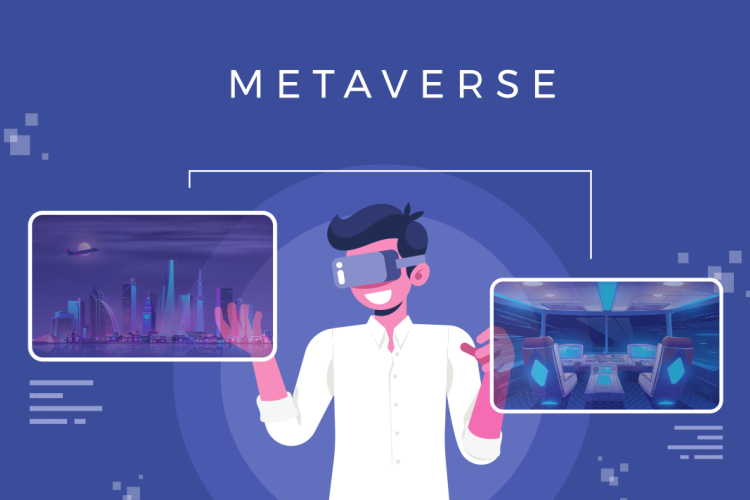When digital twins synchronize the physical and the virtual. Since the technology to purchase goods over the internet was first introduced, there has been a divide between the real world and the digital world. Buying goods in traditional brick-and-mortar stores gives shoppers the ability to physically touch or try on products prior to purchasing.
E-commerce shopping forgoes the physical aspect of traditional brick-and-mortar shopping, but it offers unprecedented convenience, speed and access. The Metaverse is where these two previously separate worlds of commerce converge to create an experience that will redefine e-commerce forever.
The metaverse is the combination of several technological innovations that all operate seamlessly together. From NFTs to social commerce to augmented and virtual reality, the metaverse brings technology out of the digital arena and into the physical world.
It’s Already Started
The very early stages of e-commerce in the metaverse are already here.
Augmented reality (AR) is already improving the traditional “omni-channel” retail pathways, with an essential customer benefit: being able to try a product before buying it (the famous “try before you buy”). For example, it is a matter of pointing the camera of one’s smartphone towards one’s feet, in order to visualize the coveted pair of sneakers, before the checkout.
Choosing a paint color by trying it on your walls in AR, being able to visually check the size and appearance of a piece of furniture in your living room, this is already possible with a simple mobile application. “This type of functionality will lead to an optimization of return rates, the major problem of online retail brands today: these returns represent each year a loss representing 2 to 3% of the revenues generated according to the French Federation of e-commerce and distance selling.
E-commerce giant Amazon has incorporated early metaverse technology into its marketplace. Its newest AR shopping tool, Room Decorator, allows you to use your phone or tablet to see what furniture and other home décor will look like in your space. You can view multiple products together, and even save the AR snapshots of your room to review later.
As these emerging technologies develop, they will continue to reshape the way we think of e-commerce.
Merging Offline And Online Commerce
E-commerce in the metaverse is certain to accelerate in the coming years. As the technology and adoption of the technology grow, it will usher in even more new features that merge offline shopping with online shopping.
The growing popularity of augmented reality technology allows consumers to be fully confident in the quality and fit of a product prior to purchasing. This helps shoppers from a convenience standpoint, but it also helps merchants reduce returns and broaden their customer base.
Product discovery and personalization will also accelerate. Metaverse technology will allow brands to offer shoppers a highly personalized digital experience. The metaverse will be a seamless experience that makes it easier for shoppers to find exactly what they want, exactly when they want it. And unlike the current limitations of personalized digital shopping experiences, the metaverse will enable brands to customize the shopping experience at scale to reach more shoppers than ever before.
An essential brick of the metaverse
These intrinsic properties make the digital twin one of the fundamental building blocks of the metaverse. If the latter will be able to host virtual worlds and the most fanciful experiences, it will also offer many uses related to an exact replication of the real. Originating in industry, the principle of digital twins is beginning to penetrate the world of e-commerce.
A digital twin is a digital representation of real-world entities — an object, system or process — synchronized with the real world. Using sensors that feed back information and bi-directional Internet of Things (IoT) connections, this technology synchronizes the digital environment with the physical world and vice versa. Any change in the material world is reflected on the digital representation (the twin) and a similar feedback takes place in the other direction.
Imagine: if you walk through a fashion designer’s virtual store, trying on clothes before buying them, you might prefer your avatar to follow your real measurements — for example, continuously updated with data from your smartphone’s photos or from your connected bathroom scale. In a business setting, a meeting in the metaverse will be even more productive if participants can interact with an exact replica of the company’s equipment and information system.
Tomorrow, with the integration of big data and artificial intelligence technologies, the digital twin will be able to predict the behavior of the physical entity.
Several visions of the metaverse coexist. Some players have essentially synthetic visions with a fixed capture of the physical world, like Meta (Facebook) or Roblox, while others perceive the metaverse as a picture of reality that is evolving and synchronized with reality. In this second vision, which is shared by key players such as Microsoft, Nvidia, Epic Games (creator of the game Fornite) or Niantic (creator of Pokemon Go), it is the digital twin that enables this real-time synchronization with the physical world.
This notion of digital twin is not recent. It was born in the automotive and aeronautics industries in order to optimize the operation and maintenance of industrial equipment based on their digital replica. Since then, the use of digital twins has expanded to other fields, such as the city, construction, logistics and medicine.
The application of the digital twin on the human body is particularly transformative. “The effect of a vaccine is different on each person,” explains the IoT Research Director at Orange Innovation. Using each person’s digital twin, rather than a generic model of a human being, to test a new vaccine is particularly effective and helps speed up its time to market.”
Community Building
The divide between social media and e-commerce will continue to close in the metaverse. Social proof is already at the core of e-commerce, as seen in the importance of Amazon reviews and other online product reviews. In the metaverse, brands will be able to take social proof beyond just a star review by building engaging communities that allow customers to engage with the brand itself and other fans of the brand.
NFTs (non-fungible tokens) are another key element to the metaverse. Brands will be able to use NFTs for several unique purposes to improve the shopping experience. NFTs will be used to create entirely new digital products. They will also be used as receipts, an access pass to special events or even early access to new product launches. NFTs can be used for an array of VIP opportunities for a brand’s most passionate customers and brand advocates.
An NFT (non-fungible tokens) is the transposition in the virtual world of the ownership model existing in the real world. NFTs allow you to buy and sell ownership of unique digital items and keep track of who owns them using the blockchain.
We’ve just scratched the surface of the ways technology will reshape e-commerce. As these technologies evolve, and the lines between the physical and digital world blur, e-commerce as we know it will begin to exist almost entirely in the metaverse.





